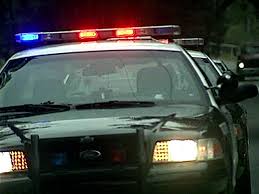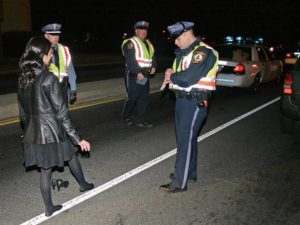Massachusetts has legalized marijuana use, and many police departments are concerned about a rise in Marijuana DUI incidents and the possible risk to public safety. Still, marijuana use is hardly a new phenomenon, even if it just became legal. It’s been decriminalized for 8 years, there is still no legal retail supply increase, and their won’t be for a couple of years. So is little reason to believe there will be an epidemic of new pot smokers getting behind the wheel while high.
However, to the degree that it is a real public safety problem (which is debatable), actually proving that someone is too high to drive is a challenge for the police and prosecution and may get even tougher.
On January 6th, 2017 the Massachusetts Supreme Judicial Court reviewed 2 issues about what evidence is admissible in a Marijuana OUI prosecution.
- Whether or not roadside field sobriety tests routinely administered by police in drunk driving cases should be admissible in cases of Operating Under the influence of Marijuana.
- If a police officer’s opinion and testimony in court on whether or not a person is high on marijuana is a conclusion that a layperson can validly draw.
Observation and testing via field sobriety exercises are the two elements of an officer’s investigation used for him or her to form the opinion that a person is intoxicated, in both alcohol and marijuana OUI cases.
And both of these investigative methods as probable cause for an arrest are being challenged in this SJC case. And for good reason.
And for good reason. The observation standards and testing exercises are well established for alcohol impairment, but highly subjective and scientifically suspect for marijuana.
The facts in the case of Commonwealth vs. Thomas J. Gerhardt
In the original case of Commonwealth V. Gerhardt, a Worcester District Court judge ruled that the field sobriety tests were not admissible in a marijuana OUI case since there was no evidence they proved THC impairment, and that the officer’s testimony that he observed the defendant to be “high” is not a determination he was qualified to testify to.
The supreme court is reviewing both of those elements.
In the case, the trooper saw and smelled some partially consumed marijuana cigarettes in the defendant’s vehicle. He asked him to perform some field sobriety tests, and testified that the defendant failed the “one leg stand” test.
Why did he fail the field sobriety test if he wasn’t high? Doesn’t that prove he was impaired?
That’s a fair question.
- People can “fail” field sobriety tests for a wide variety of reasons. Lots of people can’t pass them when stone cold sober. If you have balance issues for any reason – bad knees, bad feet, a bad back, you are over 65 or are overweight – you are not a candidate for the test, and it doesn’t prove anything.
- It doesn’t actually matter why. If “failing” the test isn’t scientifically proven to correlate with being stoned on marijuana, then it’s irrelevant.
How a typical OUI alcohol case works
Observation of symptoms of alcohol Impairment
In a police vehicle stop where OUI alcohol is suspected, after pulling over a vehicle, the officer first makes observations about the person’s manner. Very typical in cases of arrest is that the officer will state that the driver:
- had bloodshot or glassy eyes
- had slurred speech
- was unsteady on his feet
Slurred speech, as well as motor coordination and balance issues are commonly known to be associated with alcohol consumption. Alcohol is a drug that impacts the central nervous system in ways that are psychologically consistent with everyone.
That’s why we all basically know what it looks like when someone is “drunk”.
Field sobriety testing for alcohol impairment
 There are a battery of field sobriety tests that are certified by the National Highway and Traffic Safety Administration (NHTSA) that are statistically proven to be correlated with alcohol impairment.
There are a battery of field sobriety tests that are certified by the National Highway and Traffic Safety Administration (NHTSA) that are statistically proven to be correlated with alcohol impairment.
The three tests studied and validated by NHTSA for field sobriety testing are the One leg stand, the 9 Step Walk and Turn, and the Horizontal Gaze Nystagmus (HGN). When all three of these tests are administered properly, a failure is indicative of a 91% likelihood of a BAC of .08% or higher, or above the legal limit.
Based on observations and field sobriety tests, the officer then is able to “form the opinion” that the individual is legally impaired, and proceeds with an arrest.
BAC evidence at the police station after booking
Once back at the station the booking process begins, and the defendant is asked to take a breath test, commonly referred to as a “breathalyzer”. He can refuse to take the test (and should in most cases), but a refusal is subject to a license suspension.
Blowing above a .08% is fairly strong evidence of intoxication, and makes fighting the case at trial more challenging.
How Field Sobriety Tests apply in a marijuana OUI case
The elements of the case are the same:
- Officer observation of intoxication (does he look high?).
- Officer administered field sobriety tests at the scene.
- Arrest.
- Evidence gathered after arrest at the police station (testing by a Drug Recognition Expert, or DRE).
The problems with officer an officer’s observation that someone is high on pot
Marijuana simply doesn’t affect people in nearly the same way or with the same severity and impact on central nervous system functions as alcohol.
Nor does it affect people with symptoms that are universally recognized as high. A person who is high doesn’t slur or stagger. They move a little slower, but not dramatically so. Any impact can be subtle, and different people may react very differently.
We all commonly know what someone looks like if they are drunk. They are staggering and slurred. Alcohol directly impacts the central nervous system, so the effects of alcohol are standard.
There is simply no universal baseline observation that a layperson can make on the spot that a person is likely stoned.
 The problem with marijuana and Field Sobriety Testing
The problem with marijuana and Field Sobriety Testing
These tests that officers are trained to administer have never been correlated with marijuana impairment. Marijuana simply does not affect motor coordination or judgment in the way alcohol does.
There are simply no serious studies that correlate either a) what level of impairment or intoxication by THC
The government spent years studying the impact of .08% BAC levels on physical coordination and documented the tests to within 90%+ confidence.
You can’t just hand wave and say ‘marijuana is also a psychoactive intoxicant’ and expect that the same rigorous scientific analysis applies to the identical physical test when the substance itself is completely different.
If marijuana intoxication does impair driving, and that impairment is measurable by roadside field sobriety tests, then NHTSA needs to establish that with scientific standards. If they can prove and correlate those 2 things, then they can establish tests and train cops administer them to scientific and statistical standards that some evidence behind them.
Marijuana prohibitionists and anti-weed activists like Walpole Chief of Police John Carmichael like to take the media and suggest that law enforcement “needs these tools” to keep the roads safe. He has also suggested that there are better tools and field sobriety tests out there for marijuana impairment detection, such as the Romberg Balance Test and the Lack of Convergence test.
If that is true, then: a) the state has to proof it, scientifically, and under what conditions these tests establish evidence of impairment and b) train officers to administer them in ways that affirm the protocols in a valid way.
But until then, there is simply no reason to believe tests of alcohol intoxication have any validity for marijuana impairment.
The Mass SJC should reject this highly subjective and unproven “evidence”.

